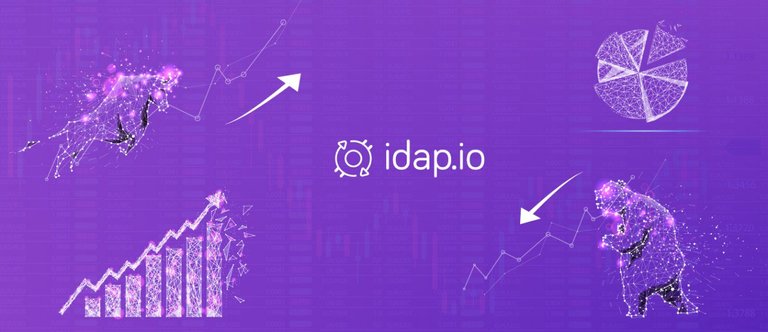Within the idap.io community, we received positive feedback on our last post, Types of orders and how to use them in crypto trading and thus we want put out more introductory articles touching upon many topics relevant to beginners in crypto trading.
In this post, we will provide a gentle foray into Trading Strategies and how newcomers can benefit from choosing the right one. Our Desktop Trading Interface has been designed to encourage and pursue a strategic style of trading, and thus we hope to inspire a new generation of retail investors who learn and trade with our platform when its comes to crypto trading.

To begin at the beginning, a trading strategy comprises objective rules set to dictate your entry into a trade and the exit from said trade. Simply put, with a trading strategy, you minimize the guesswork involved in selling and buying your coin or its derivative instrument by planning ahead and sticking to this plan.
A trading strategy specifies when you enter a particular trade, what factors trigger this entry, what conditions need to occur for you to exit this trade, how funds are managed to achieve the trade, the kind of time frame you will follow, what relevant order types will be involved and so forth.
As stressed many a times, trading is an art form and like with any art form, there is a requirement for individuality; there is no one-rule-for-all type of strategy. Each new trader needs to identify what kind of trading suits them most and then develop a strategy in line with this style. To give an overview, there are several styles of traders present in the market, though it is noteworthy that this is in no way a hard and fast categorization:
Buy-and-hold Trader: HODLing cryptocurrencies is quite popular among crypto enthusiasts and though the memes about ‘Moon’ and ‘Lambo’ are fun, trading means buying and then eventually selling. Buy-and-hold trading is a long-term strategy, where a trader purchases cryptocurrencies with the hope that in the longer run of things, the market will rise upwards and when he sells, the final trend will have outweighed the bear and bull runs that happened in the interim. The time frame in consideration could be weeks, months or even years. ICO contributors can be thought of as one example of this type of trader, as they buy the token or coin for a project to fund it, profiting as the project grows over time. They may keep selling a portion of what they invested every quarter following the upward trend or go for a one time out after several years to reap handsome gains.
Active Trader: In contrast to the passive approach of buy-and-hold, active trading involves a trader buying or selling every day, within hours and at times even within few minutes. A time frame of a couple of days or even few weeks between entry and exit may also be regarded as active trading; there is no well-defined point of convergence between active and buy-and-hold trading. In case of cryptocurrencies, traders try to buy low and sell high, making a profit as the price jumps up in short spurts. To counter volatility of the market, conditional orders like stop loss, trailing stops, stop-limit, etc. play an important role during order execution. Traders can also bet against the market via derivative trading instruments such as futures outright, spreads and butterfly.
Fundamental Trader: Another way to classify traders is to see how they conduct their analysis. Fundamental Analysis involves trying to asses the intrinsic worth of the asset that is to be bought. This may involve inspecting several different metrics. Suppose someone wants see if buying IDAP tokens will be profitable. They will see that the founding team is from a trading background, look at the advisors involved and find they are industry experts in their domain, check that the derivatives market has a high potential and that idap.io stands to capture a good share of this market, the project has a working demo, the token supply will be maintained to fuel demand over the years and various incentives to platform users justify the utility of IDAP tokens and thus will arrive at the conclusion that a portion of their portfolio should comprise IDAP tokens, as return on this investment will be quite high.
Technical Trader: Another quantitative approach to trading is Technical Analysis. Using historical data, metrics like moving averages and trend lines, testing out this data under different market conditions using a simulator, calculating a time frame to entry and exit the trade and finally allocating funds to either speculate or hedge based on all the findings is what a technical trader undertakes. Thus by observing the market, running the numbers and capitalizing on the results of processing all the information obtained from the charts, trades are executed based on a robust mathematical strategy. This form of trading can also be extended into automation, a topic along with several others related to Technical Analysis we will address in later posts.
Traders are not loyal purists to any one particular style. Strategies are developed merging different styles and deployed depending on the kind of timeline the trader is looking to follow. For new traders, it is important that they explore all styles as much as possible before making up their mind.
Trading strategies are not guarantors of success by any means but following one does introduce a systemic approach to trading, laying the foundation for developing the art of trading. As we publish more introductory articles, we will revisit some of the concepts introduced in this post.
In the meantime, follow us on Medium to stay updated!